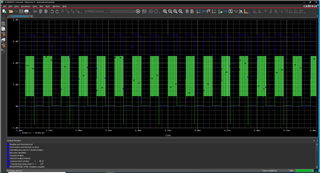According to a previous discussion, Tyler Townsend answered "It looks like these two waveforms show two different devices / drivers. The SN65HVD7x RS-485 transceivers do not have a built in offset as shown in the second scope capture". Yet when I simulate the chip in Pspice for TI, I get a waveform that shows an offset?



